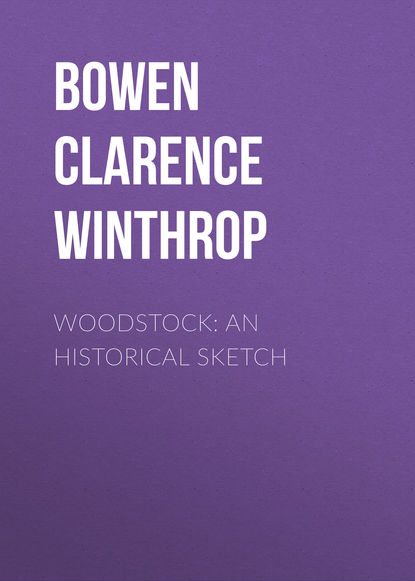По всем вопросам обращайтесь на: info@litportal.ru
(©) 2003-2024.
✖
Woodstock: An historical sketch
Настройки чтения
Размер шрифта
Высота строк
Поля
10
Also “called the Wabbaquassett and Whetstone country; and sometimes the Mohegan conquered country, as Uncas had conquered and added it to his sachemdom.” Trumbull’s “History of Connecticut,” vol. i., 31.
11
September.
12
Winthrop’s “Journal,” by Savage, vol. i, 132. Palfrey’s “Hist. of New England,” vol. i., 369. The same year (Nov. 1633), “Samuel Hall and two other persons travelled westward into the country as far as this [Connecticut] river.” Holmes’ “Annals,” vol. i., 220.
13
Winthrop’s “Journal,” vol. i., 171.
14
Possibly some of the Dorchester emigrants, including Henry Wolcott, William Phelps, and others, may have passed a little south of this line. Dr. McClure’s MSS., in the possession of the Connecticut Historical Society: “In a conversation with the late aged and respectable Capt. Sabin of Pomfret, Ct., he related to me the following discovery, viz.: About forty years ago he felled a large and ancient yoke about the north line of Pomfret adjoining Woodstock. On cutting within some inches of the heart of the tree it was seen to have been cut and chipped with some short tool like an axe. Rightly judging that at the time when it must have been done the Indians so far inland were destitute and ignorant of the use of iron tools, he counted the number of the annual circular rings from the said marks to the bark of the tree, and found that there were as many rings as the years which had intervened from the migration of the Dorchester party to that time. Hence ‘the probability that they had journeyed along the north border of Pomfret, and as they traveled by a compass, the conjecture is corroborated by that course being nearly in a direct line from Boston to the place of their settlement on the Connecticut River.’” – Stiles’ “History of Ancient Windsor,” p. 26.
15
“Memorial Hist. of Boston,” vol. i., 263.
16
“Historical Collections of the Indians in New England. By Daniel Gookin, Gentleman, Printed from the original manuscript, 1792.” See “Collections Mass. Hist. Soc.,” vol. i., First Series, pp. 190-192.
17
Wabbaquasset, or Woodstock.
18
Dudley.
19
1674.
20
Black James was a distinguished Indian. He met Eliot again in Cambridge in June of 1681, where a meeting of the claimants of the Nipmuck country was held. The village and much of the land of the town of Dudley was known years after the settlement of Woodstock as “The Land of Black James and Company.” – Ammidown’s “Historical Collections,” vol. i., 406, 461.
21
Named after “Wabbaquasset Hall,” built in the spring or summer of 1686.
22
Palfrey’s “History of New England,” vol. iii., 159.
23
Mrs. L. H. Sigourney’s “Pocahontas.”
24
Feb. 10, 1682.
25
Ellis’ “History of Roxbury Town”: “When the people of Roxbury came to take up lands, they selected their locations amongst the praying Indians or where Indians had been converted to Christianity… This certainly is a sure indication of the steady adherence of his [John Eliot’s] fellow-townsmen and their belief in the actual benefits of his missionary labors.”
26
Oct. 6, 10, and 17.
27
Joseph Griggs, John Ruggles, and Edward Morris.
28
Dec. 5, 1683.
29
“Records of the Governor and Company of Massachusetts Bay in New England,” vol. v., 426.
30
Oct. 27, 1684.
31
Jan. 28th.
32
“Records of the Governor and Company of the Massachusetts Bay in New England,” vol. v., 468.
33
Committee appointed May 14, 1686, and reported to Roxbury June 12th.
34
Though the name of John Ruggles was on the list of “goers” and a house lot was drawn for him, he did not settle in Woodstock. The family of Ruggles is prominent among the first settlers in Pomfret.





